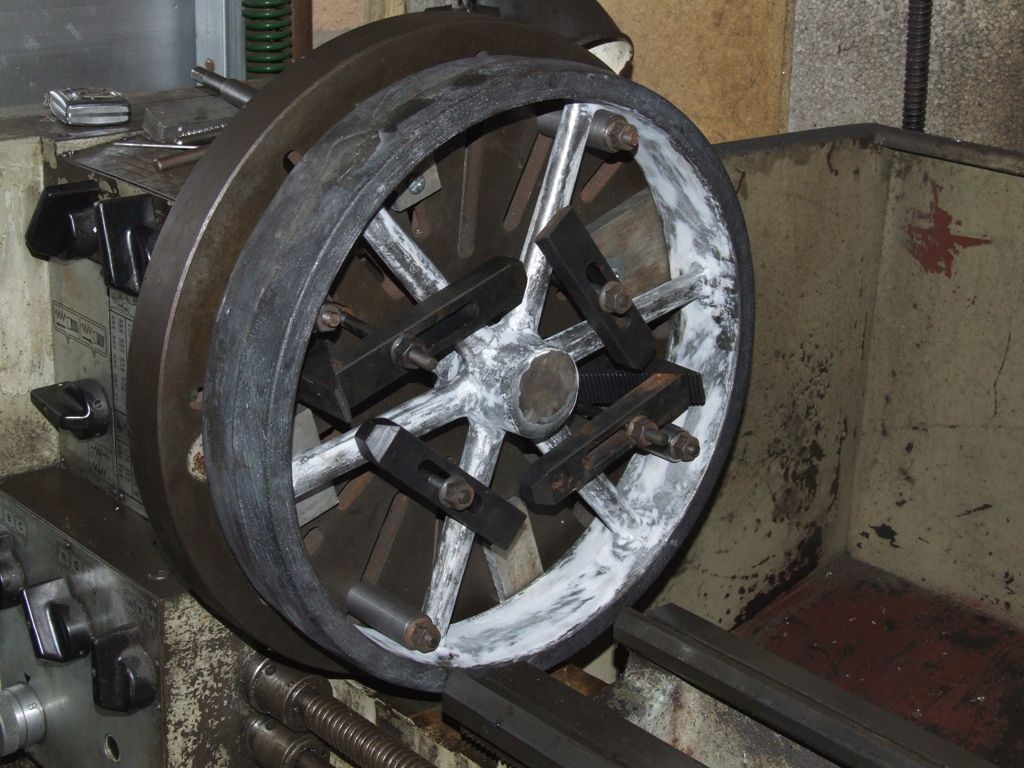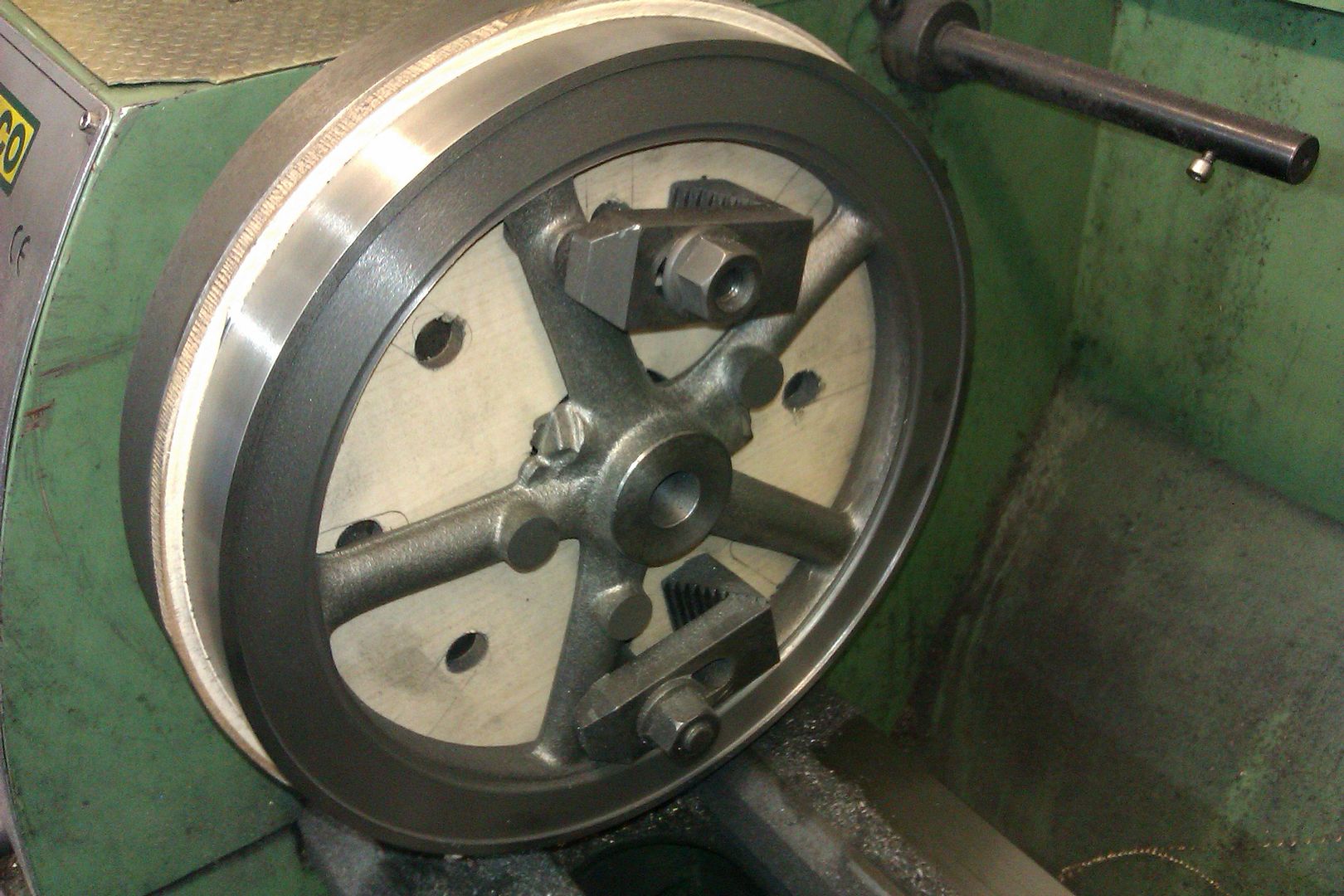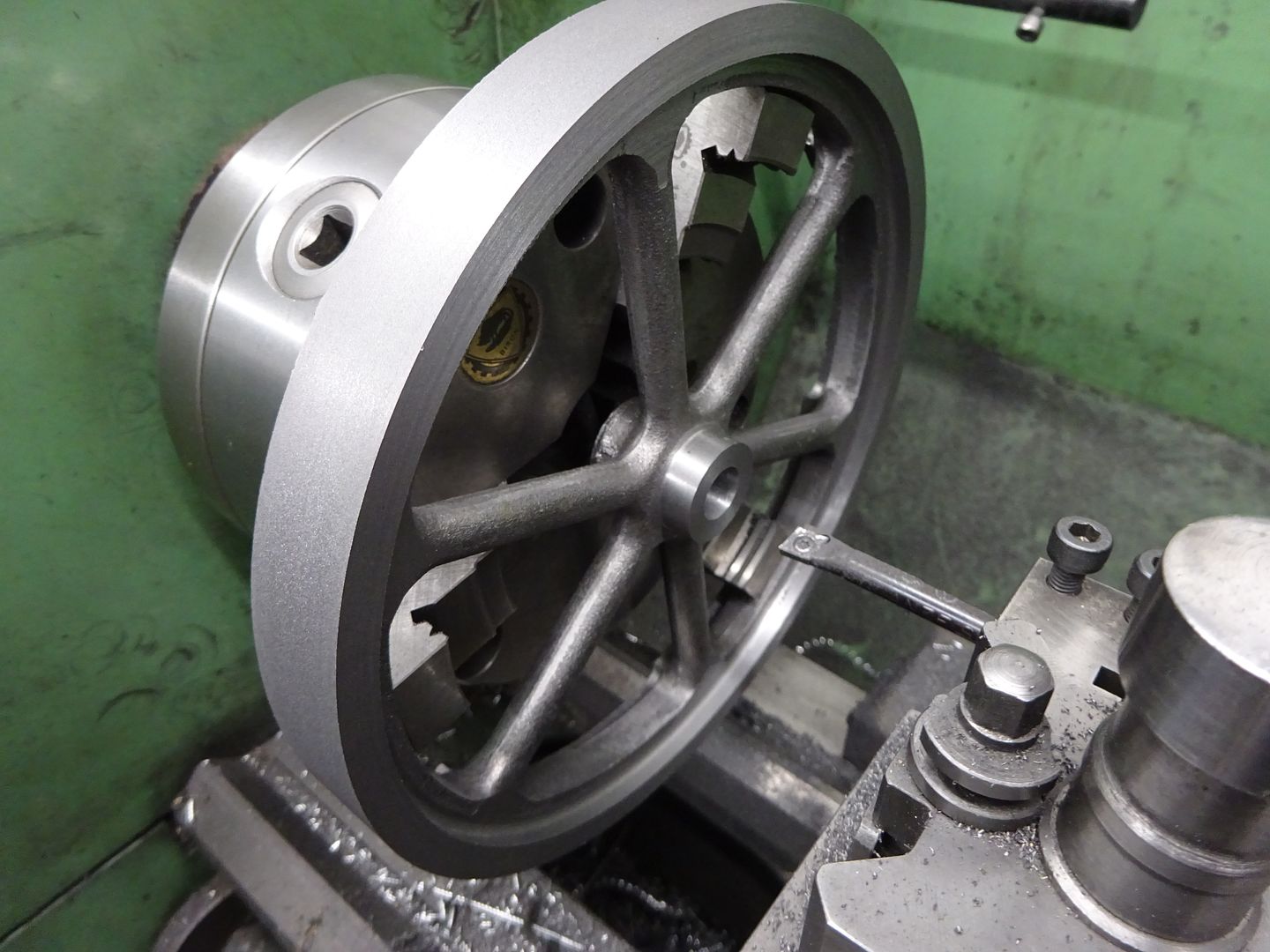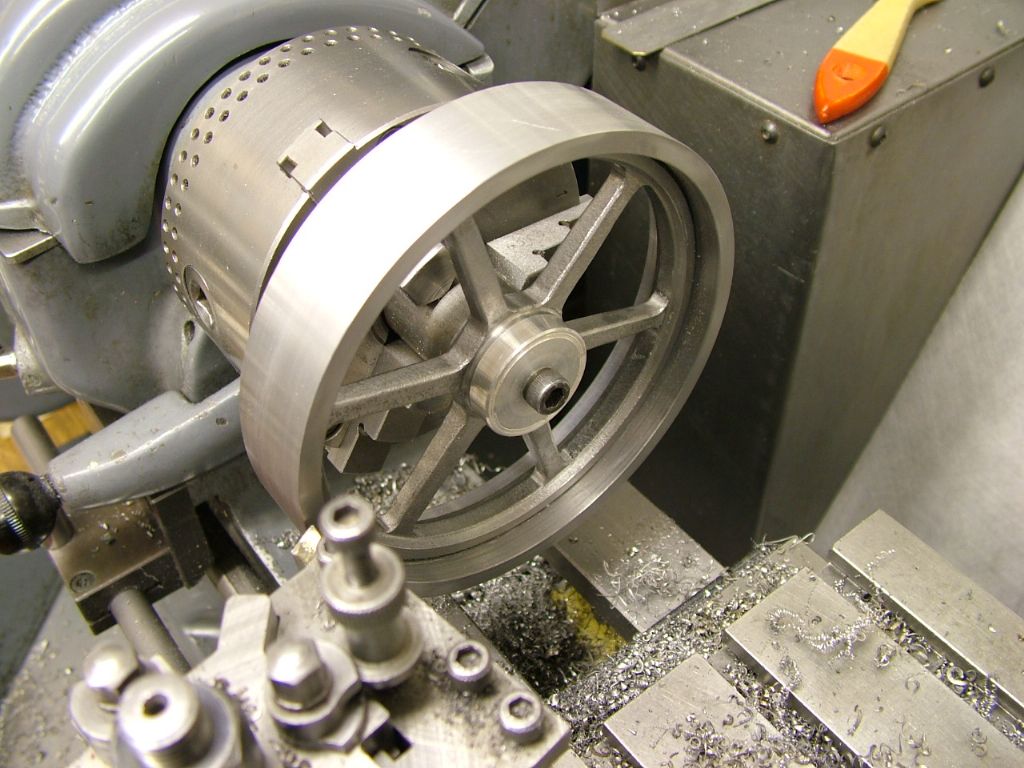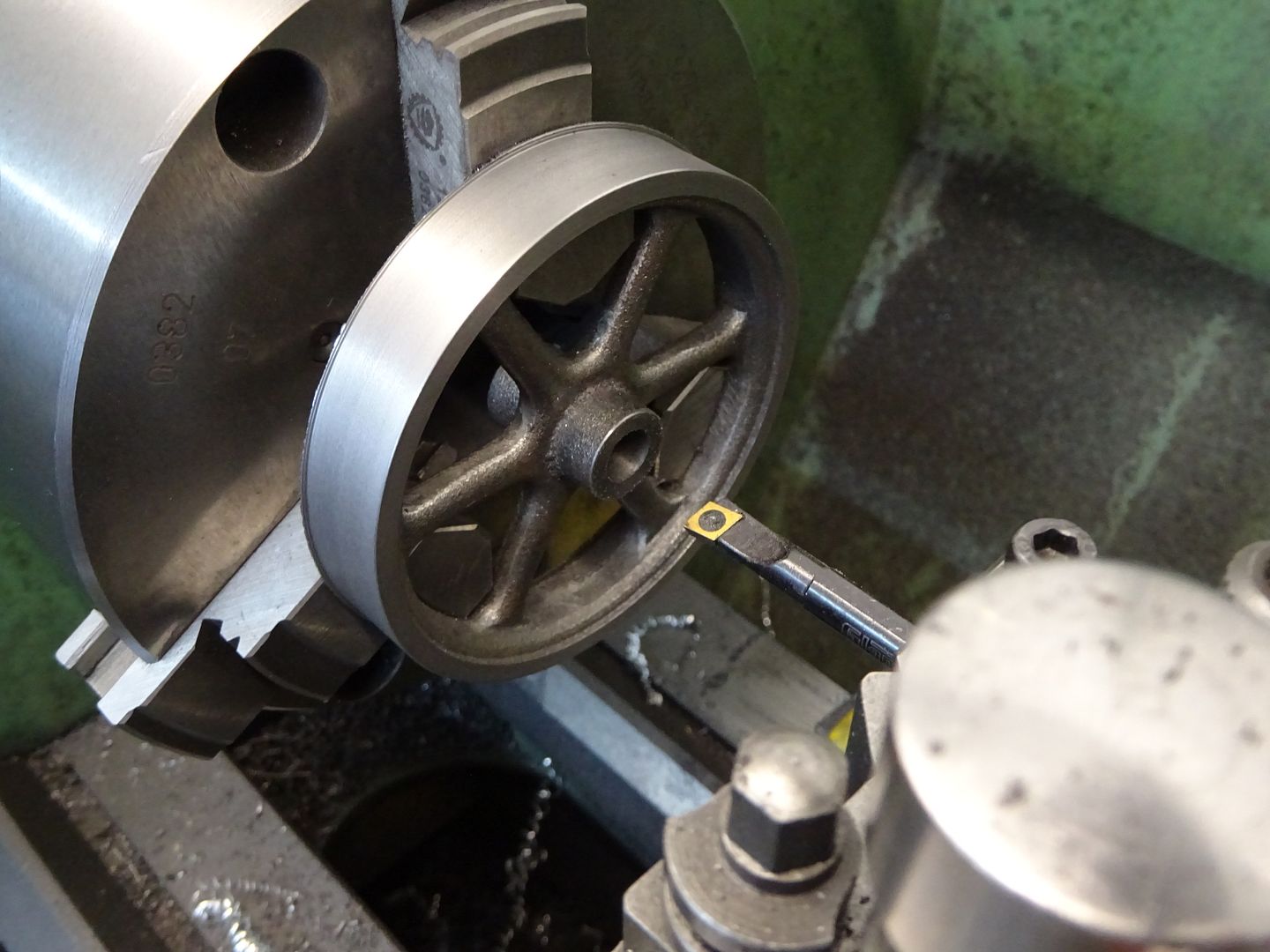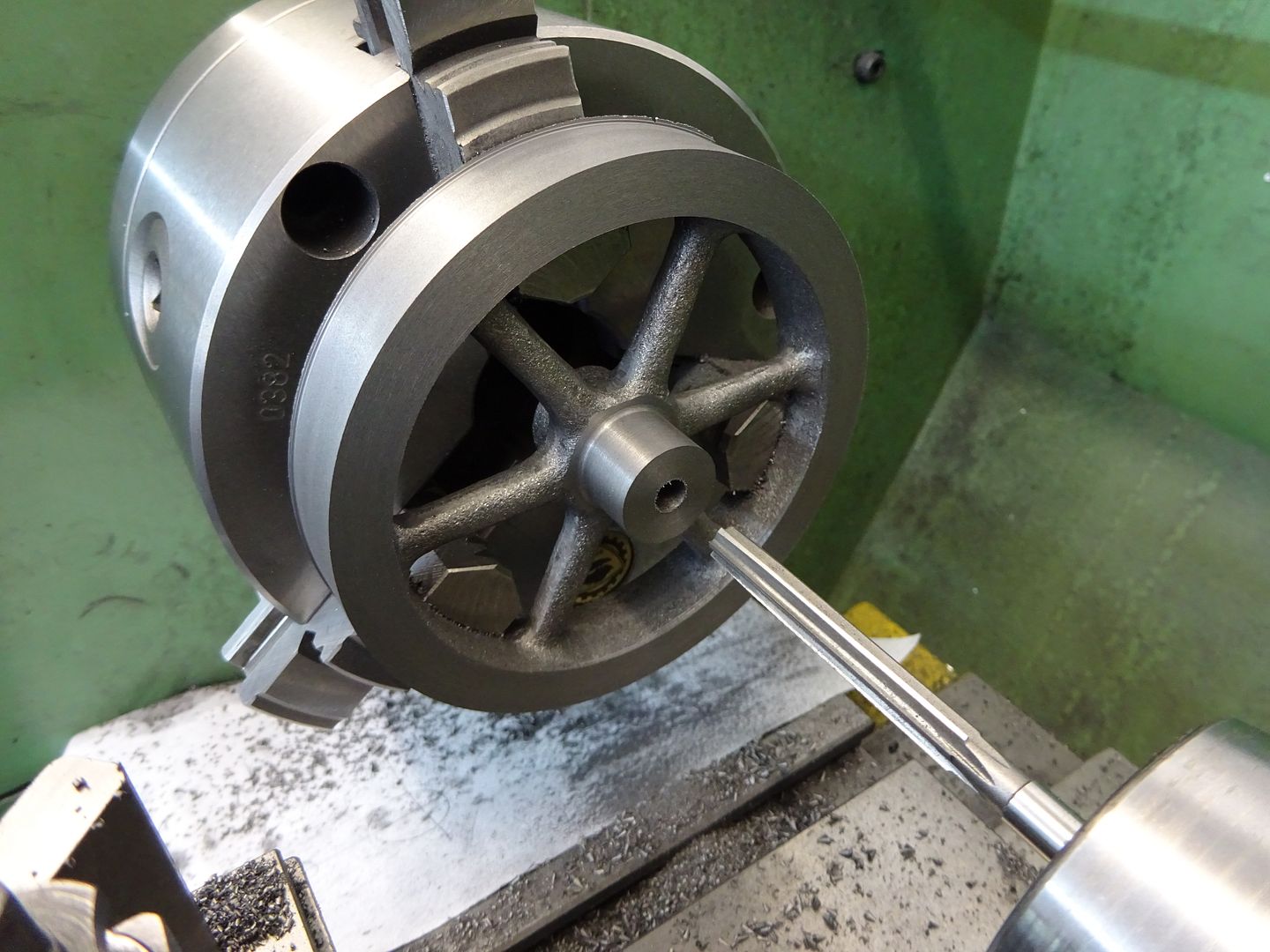I'm with Jason on not being a fan of mounting flywheels or any other relatively large diameter component on a mandrel. Not only do you risk chatter but the constant tiny vibrations produced when machining can work the thing on until its really tight making it hard to remove without risk of breaking.
Although cast iron has high damping its inherently granular so the cutting forces aren't smooth. If you have something that machines nicely with a continuous chip the steady force tends to screw the component on tighter.
For parallel mandrels there seems to be a fine balance between tight enough to hold yet not so tight that it can work on hard. There is a reason why the professionals make them with a very fine taper.
A few cycles of gentle warming and cooling over a few cycles can release such stuck components. Best if you can arrange something to apply a little push or pull force in the right direction. Don't get rush-headed. Even if it takes as long to get the bits unstuck as it did to get them jammed in the first place you are still ahead.
I prefer to use a spindle collet and faceplate set-up for such things. Nice sliding, shake free, fit mandrel in the spindle collet to align the part. Strap it to the faceplate to hold it for machining. Aligning things on face plates is well off the bottom of my "liked jobs" list. Most especially if I have more than one the same.
But, having spent far too many £ over far too many years, I have the gear.
Assuming a morse taper in the spindle a blank end arbor turned to size or sleeved up as appropriate is as effective as a mandrel and collet.
Considerably more wallet friendly than my full sets of imperial (by 1/64 ths) and metric (by 0.5 mm) 5C collets too.
A blank arbor or two of appropriate sizes immediately to hand for modification into semi-sacrificial tooling is an essential part of any normally impecunious Model Engineer or Home Workshop persons toolkit. Building up to size with weld or sticking bits on when its gotten too small is perfectly acceptable!
Clive
James Hall 3.


